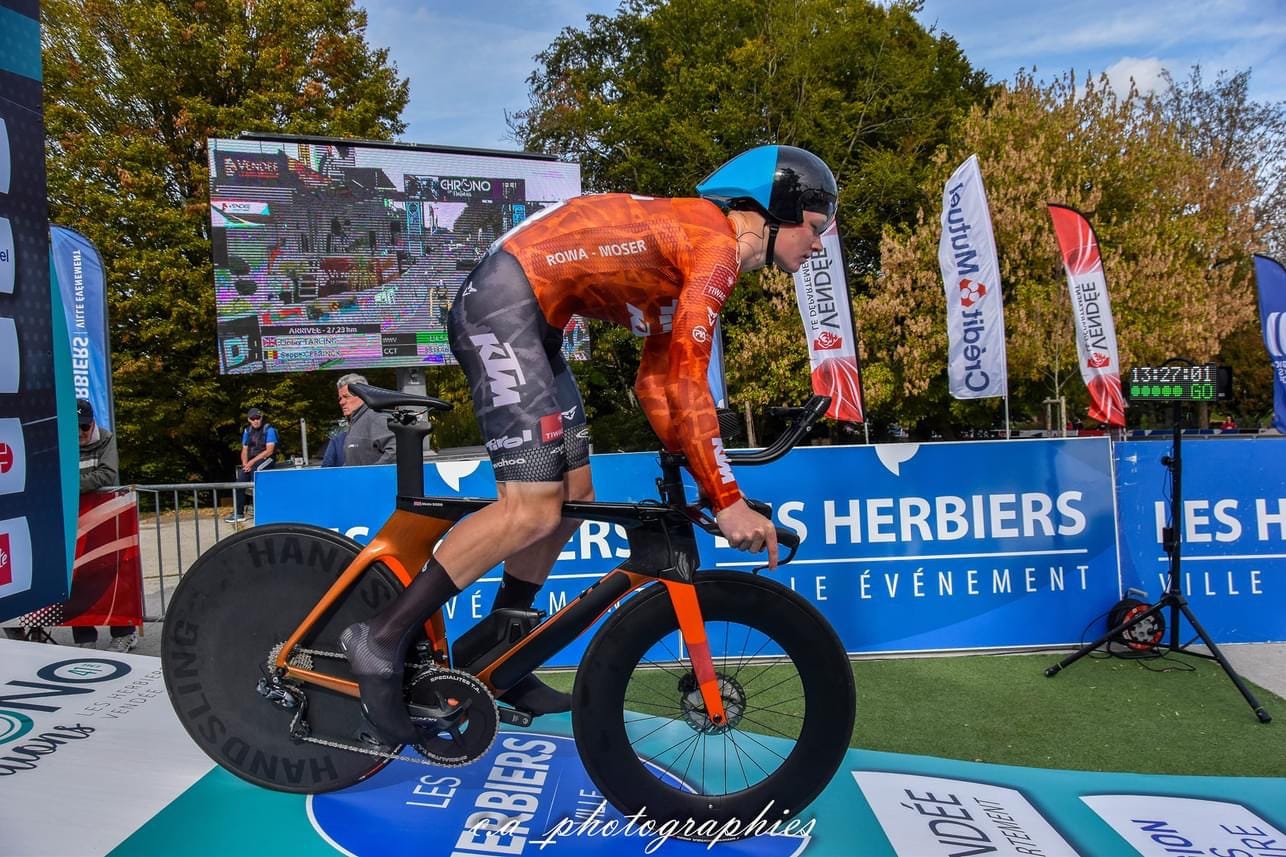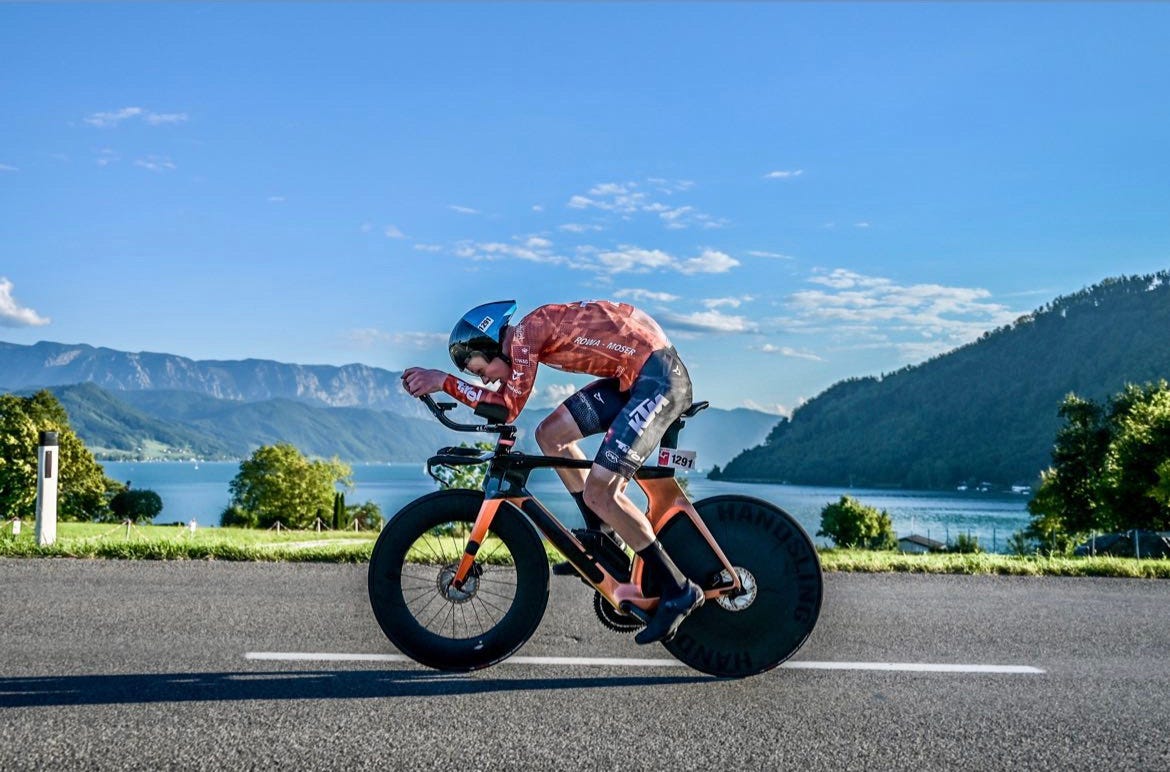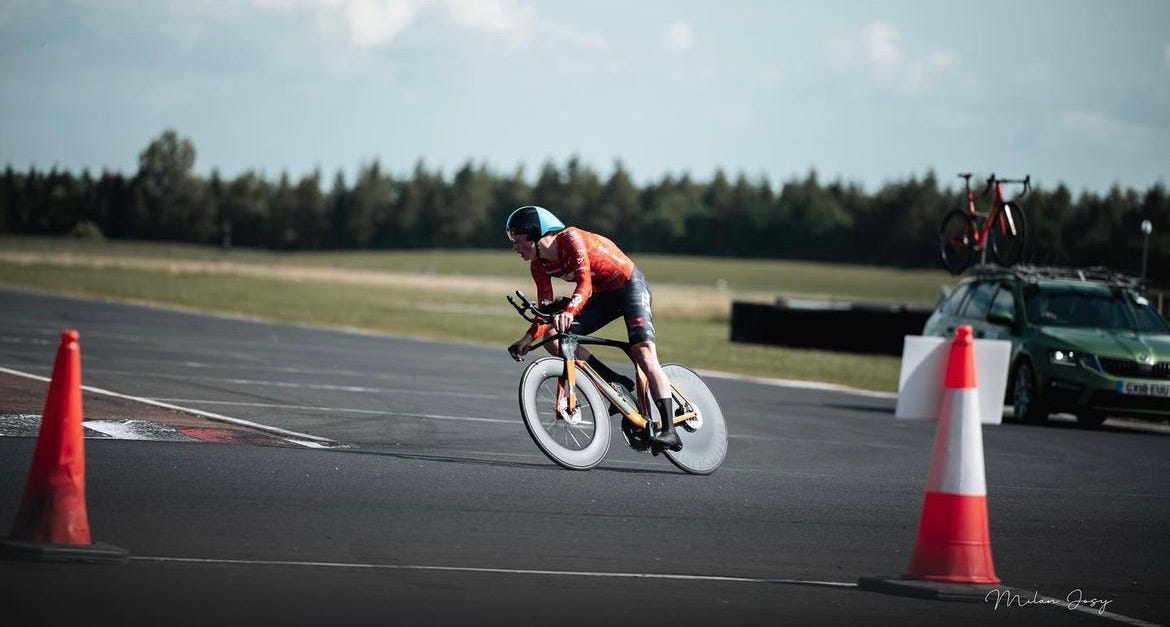Time trialling - joy in simplicity
The "race of truth" is one of the best parts of cycling in my opinion. Why? Well, it's difficult to explain quickly without sounding a bit strange. Read on below for a more in-depth explanation.
The bike, the legs, the road and the clock. That’s it, that’s time trialling. It’s about completing a set course as fast as you can, alone. The simplest form of bike racing. No hiding places, no chaos of the peleton, no distractions. And I bloody love it.
Block out the noise
One thing you can guarantee is that the strongest rider on the day will be the same as the one on the top step of the podium at the end of it. That’s something that often isn’t necessarily said about bunch racing, where the sheer chaos of many races result in tactical nous, and simply falling on the right side of Lady Luck, playing just as great a role as what’s under the metaphorical hood. The result of this simple input-outcome relationship makes for a much more tunnel-vision style focus during the build-up to the race itself.
I, for one, go into a time trial not giving a single thought to any other name on the start list. Once I roll down that ramp, the way others execute their race has no bearing on how I ride. Very much the opposite of a road race where one has to try and anticipate and react to the moves made by other riders. Time trialling is the solitaire to road racing’s poker.
My only focus before a time trial is running through how I, and only I, am going to execute the pacing of the effort and the line on the road. That inward focus often means that I find I feel less nervous for time trials, knowing that where I finish on the day will come down to how I ride the course - the actions and moves made by others have no effect on how I do that.
At the same time, the fact that you’re the only rider on the road means that there’s only one person who can make a mistake and ruin a race. Poor execution of pacing, taking a corner wrong, not holding position on the bike, or just plain not having the legs can’t be the fault of anyone else. There is truly nowhere to hide if something is done incorrectly. Part of me enjoys that though. I know everything has to be perfectly in order to get the result you want, and it’s down to me to ensure that.
“Behind every beautiful thing, there’s some kind of pain”
There’s one thing you can’t escape in TT. The pain. You know it’s going to hurt. You know you’re going to finish with nothing left. You know there’s no way around that.
There’s no easy time trials. While no road race should ever be disrespected as “easy”, there are certainly a few out there finished without every rider on their knees. The same cannot be said about time trials. Every rider that comes across that line is in a world of hurt, having pushed their body to the absolute limit of what it is capable over that distance. Legs in agony, lungs gasping for oxygen and upper body seized from holding a position that will never entirely be comfortable. The finish line zone of a TT will often be littered with riders bent double, collapsed over their bike, making sounds neither they nor you ever knew they could make.
That’s part of the appeal though, it’s an addiction that keeps you coming back. Somehow, nothing is as enjoyable, yet quite so horrendous at the same time. There’s a sense of clarity that only comes after getting everything out. The same sense that people spend years practising meditation for. If only they knew could achieve the same results in as little as twenty minutes…
It’s not as simple as riding as hard as you can as soon as you can. No, the art form of pacing must be practised over years. In the same way the painter has an inexplicable intuition about his canvas and colours, the time triallist must do the same with the sensations from their legs, the bombardment of feedback coming from the environment.
However, it’s an art that can only be practised in race conditions. Every rider has the story of their first time trial. You can guarantee that each one starts with “I went too hard early on”. The adrenaline, the number on your back and the borderline dangerous amounts of caffeine all making those first few minutes feels eerily comfortable, it’s far too easy to chase the pain. That’s a deadly mistake. You have to trust your plan, trust the pain will come. It will, of that you can guarantee. Too hard, too soon or too hard, too late - the line between the two is like balancing on a razor blade. Everything should come out as you hit the line, not earlier, neither not at all.
The relentless pursuit of speed
So… you know how I was saying time trialling was pretty simple? Yeah, well that’s not entirely the whole story. While the execution of the effort and the day of the race is a fairly uncomplicated affair, the technical aspect of the discipline is, well… how long have you got?
The recipe for the highest speed on a flat course is essentially having the lowest aerodynamic drag for the highest amount of power. The power side of this relationship has long been the focus of training since the dawn of the sport. The aerodynamics element is frankly unrecognisable when compared to even ten years ago - go back further and it starts to look almost like a different sport.
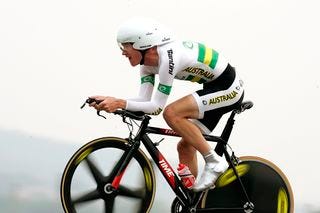
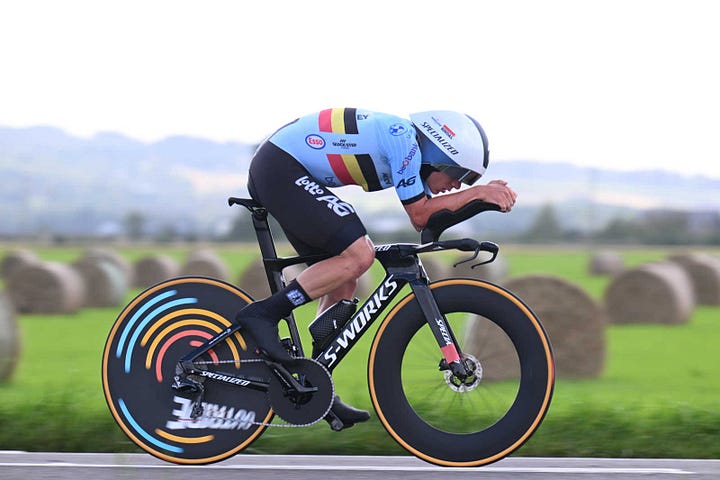
Name a part of the bike or rider, and it’s been thought about and “aerofied” (add that to your vocabulary Dan Bigham). Socks, bottles, tyres, even chainrings - it’s all been thought about. At the top of the sport, it now becomes nearly as much of a question of how much time has been spent thinking about aerodynamics as has been spent training. For riders without the access to the tens of millions of pounds at the disposal of WorldTour teams to invest into kit, i.e. all those at Conti level or below, it becomes a game of weighing cost (in time and money) against the gains. That involves making the purchases on kit that is known to have the biggest impact for the smallest cost. An example I can give from my end, albeit not aerodynamic but related to rolling resistance, is latex inner tubes. While, the cost of a single inner tube may be £10 more expensive than a standard butyl one, the savings are similar to spending thousands for the same gains for a faster disc wheel.
It then becomes about using acquired knowledge and research, as well as copying riders of similar builds, to get what common knowledge suggests is likely a fast position. Rarely is this entirely comfortable. As a result, it becomes about spending time in that position to be able to put out the power over the duration while sustaining composure with one’s upper body. Add into the mix help from a professional bikefitter or someone with extensive knowledge of aerodynamics, and you can get pretty close to the same aerodynamics drag of those WorldTour teams with the enormous budgets I mentioned. Admittedly, there is an element of diminishing returns in terms of money spent on this aero business. So covering the last part of the gap between the aerodynamics of a well-set up Conti rider and one funded by a WorldTeam would cost frightening amounts.
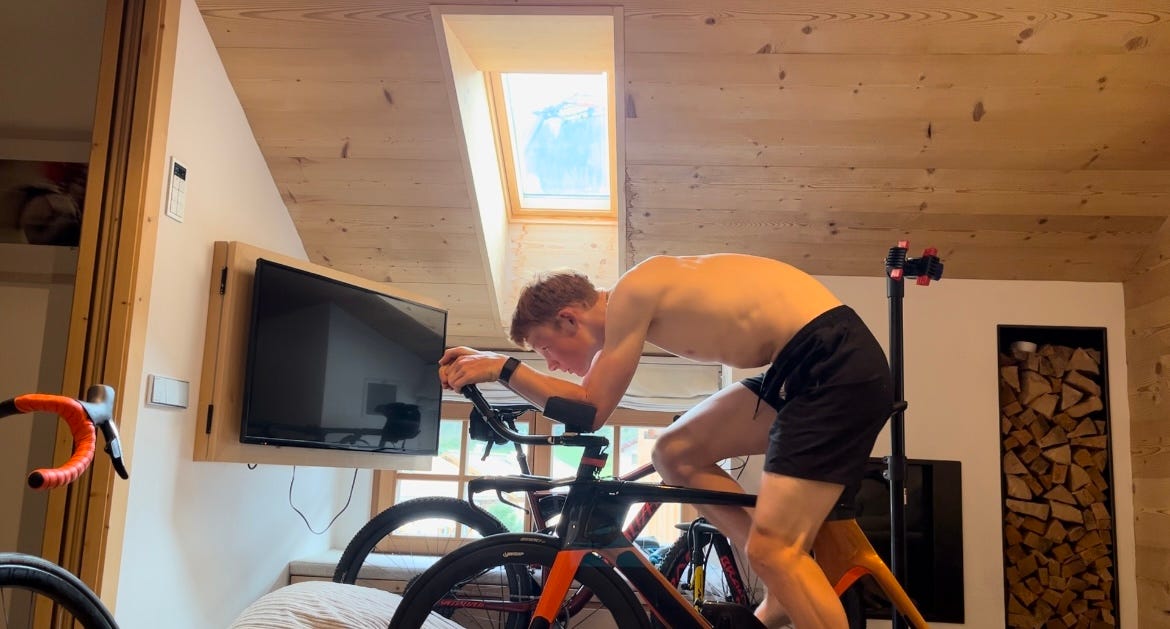
All this space-age looking equipment is heavily regulated by the UCI even before it hits production. Regulation is just as severe for the position of the rider, measured for its legality by the notoriously unreliable jigs. These things would likely yield similar results if they involved a rider spinning a wheel of fortune. I remember a race a few years ago where my left extension pole failed for being too long, yet the right passed. I can assure you that I’m not the type of person to have different length extensions - I have spent far too long swearing over and fiddling with tape measures for that kind of amateurish behaviour.
As if the simple “analogue” machines weren’t accurate enough with their series of swinging lever-style parts, some bright spark decided to make a new one with lasers. While this may sound like a bright idea, you have to remember the tolerances on these things have to be perfect. When they’ve been lugged around in the back of a van and then assembled slightly haphazardly, they become more like a low budget laser light show, again often yielding confusing results.
Anyway, rant about UCI jigs over. The aero arms race between those at the top of the sport is all well and good, and plays a large role in why cycling, not just time trialling is so much faster these days. That said, it doesn’t make a jot of difference how aero you are, how efficient your drivetrain is, nor how light the bike is, if you don’t have the legs. It still largely comes down to who has the biggest engine, who’s the best rider on the day, though the aerodynamics side of it, now more than ever, plays a major role in the name at the top of the results sheet.
The root of it all
Reading what I’ve written so far, you would be forgiven for thinking that participation in the beautiful spectacle that is time trialling is reserved for those who count cycling as their life’s work. After all, you need to spend a sizeable chunk of your life in the saddle to be successful. That’s on top of the experience in race execution you need to acquire over the years, not to mention the kit I talked about.
In Britain, at least, that couldn’t be farther from the truth. Nowhere is the local time trialling scene more rooted in a country’s cycling culture than here. Governed by the aptly named Cycling Time Trials (CTT), events take place across standard distances of 10, 25, 50 and 100 miles. Races take place up and down the country throughout the summer, the same faces and names repeatedly popping up at any given race within a region.
There are a few small things that differentiate them from the relative glitz and glamour of the time trials in the likes of the Tour. The first being that the closed, spectator-lined roads of the WorldTour make way for a mix of A-roads and quiet country lanes, complete with drivers confused by the steady stream of Lycra-wearing human missiles. Not only is the motorised traffic accepted by riders, there is a particular breed of nutter who searches for the higher traffic courses - the bow-wave of a fast moving vehicle serving to help propel the rider forwards.
The nature of these races taking place on the A(insert two random numbers) means that races often start as early as daylight will allow, as so to avoid the busiest of roads. That means that those turning up at sign-on are often using caffeine to simply stay awake, as opposed to its usage as a stimulant for increased performance on the other end of the spectrum.
The community created at these events is incredible though. Go to a professional time trial and you’ve got the newest equipment, logo’d up team vehicles, some of the fittest humans on the planet. A village hall in Dorking at 6 am on a Sunday morning on the other hand will have a sense of community and an atmosphere that lifts the soul. The range of abilities is enormous. You’ve got people who are firmly on the downward slope from their peak - old school “testers” as their called, they’ve seen cycling develop and grow over the decades. There’s people just trying to get into the sport, beat their time from week to week, without the pressure and chaos of the road being filled with others. Then there’s the pros and local hitters using the local TTs as dress rehearsals for the major races. This range of abilities and finishing times is all brushed aside for a chat and cup of tea while dissecting the results post-race. Everyone having put themselves through the same, slightly sadistic ordeal in the name of enjoyment. It’s a perfect leveller. That’s part of the beauty of the British local TTs.
As far as I’m aware, there’s no other country that possesses a scene similar. Not in its uniqueness and tradition, at least. Tell a Belgian you can can do an 18 minute “10”, and you’ll get a confused look, possibly followed by a request for the explanation of the imperial measurement system. It seems to have results though. Many a British name in the top ten of major TT races over the years can trace some sort of root back to those early mornings emptying themselves up and down a dual carriageway
.
Maybe I’m just a bit crazy
Whether it be a seventy-year-old seasoned veteran of cycling, someone just starting out, or a fully fledged WorldTour pro, all have that same shared goal to cover the course as quickly as possible. Everyone has to go through that same suffering, the same struggle against every part of your body telling you that continuing is a very bad idea.
On paper, biting off your own finger may sound just as fun, yet that is part of the very foundation of what makes time trialling appeal to me. The clarity and sense of calm that comes after and the satisfaction you get from emptying the tank completely is only relatable to those who’ve experienced it. The perfect time trial is something that is so simple, yet so hard to perfect. It’s a skill that comes after years of listening to, then proceeding to ignore the sensations coming from your body.
That isolation of you, the bike, the road and the pain. That’s time trialling. It’s so simple. The simplicity of one rider, one road and one time on the clock is where I find so much enjoyment. A strange, painful, question-my-own sanity kind of enjoyment. And it’s bloody brilliant. Well, it’s either enjoyment, or maybe I’m just a little nuts. Oh well, each to their own, eh?


